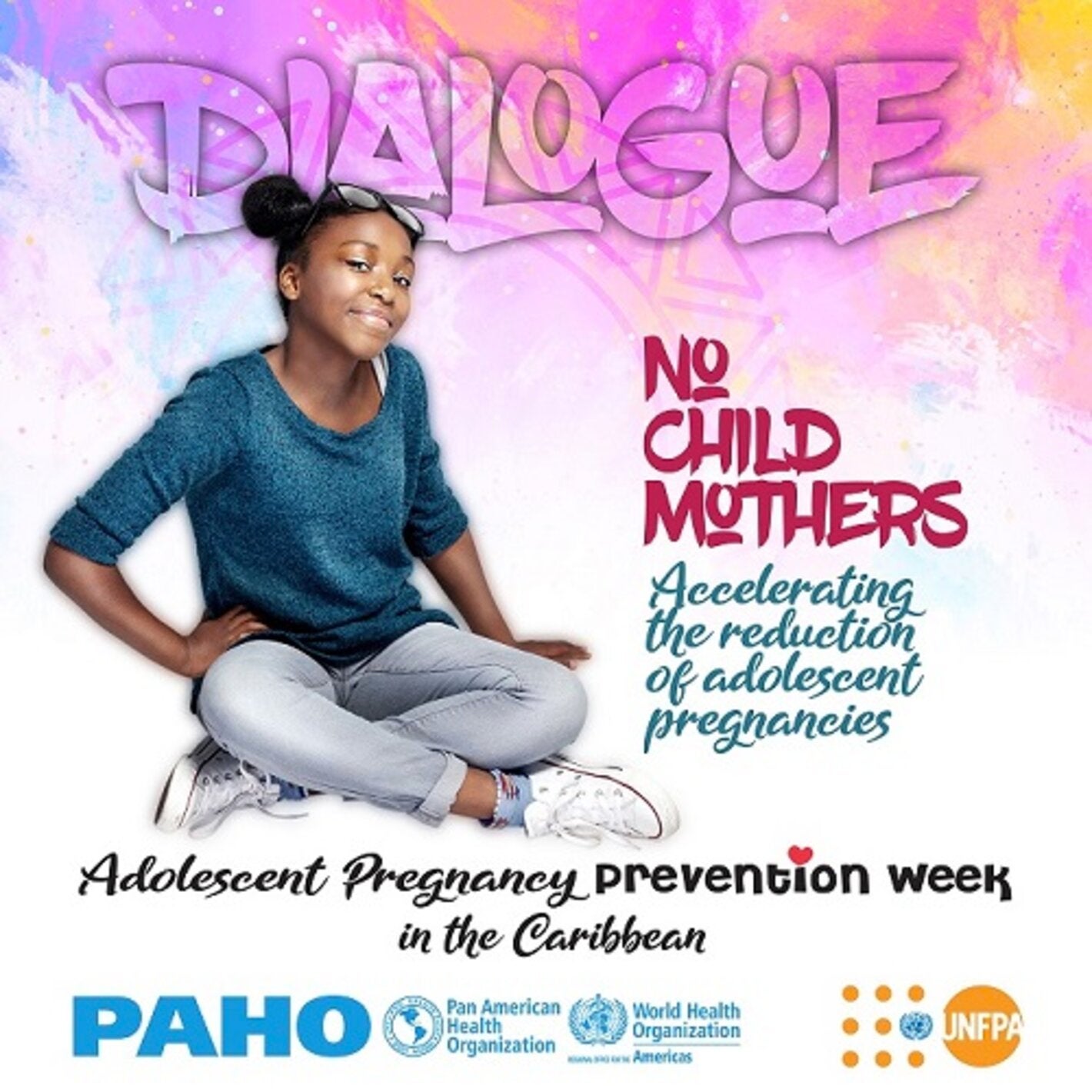
NO MORE CHILD MOTHERS IN THE CARIBBEAN
Bridgetown, 20 October 2020 (PAHO/WHO) - Becoming a mother is a beautiful and landmark event in the lives of many women - particularly when the pregnancy is planned or desired, and childbirth is safe. But pregnancy during adolescence can have far-reaching negative and irreversible consequences for both the young girl and her child.
Adolescent pregnancy disproportionately affects girls who are already marginalized and further affects their educational and employment opportunities, thus contributing to the continuation of intergenerational cycles of poverty, exclusion, and marginalization.
This year, PAHO and UNFPA supported the expansion of the Latin American Adolescent Pregnancy Prevention Week and inaugurated the Caribbean Adolescent Pregnancy Prevention Week as opportunities to draw attention to this important topic and help put an end to adolescent pregnancy in our region. The week runs from October 18-24th and will be observed annually. Regional leaders and stakeholders are therefore being called to focus on adolescent pregnancy prevention as one of the social and economic consequences of this pandemic.
“The call is clear: Together, we must take concerted actions toward reducing adolescent pregnancy. Our adolescent girls need us to protect them from violence, empower them, guarantee their access to comprehensive and quality health services, and offer them real opportunities to be their healthiest selves and look forward to bright futures,” stated Alison Drayton, Director of UNFPA Sub-Regional Office for the Caribbean.
Countries have formulated strategies and plans and implemented actions to address adolescent pregnancy. However, too often, interventions are not evidence-based, not developed in a participatory approach with young people, and implemented at a limited scale. “Efforts to reach the most affected and vulnerable groups are insufficient and we see the inequity gaps are increasing. It is critical that resources are invested in concrete interventions with proven efficacy. From the remarkable progress made by some countries in our region in recent years, we know that it is possible to significantly reduce adolescent fertility in a relatively short time,” explained Dr. Andres de Francisco, Director of the PAHO Family, Health Promotion and Life Course Department.
Latin America and the Caribbean (LAC) rank second among the regions of the world in terms of adolescent pregnancy rates with 60.7 births per 1,000 girls between the age of 15 and 19 years (2015-2020). Each year in the LAC region, five out of every 100 pregnancies occur in girls under the age of 20, and 2 million children are born to young mothers between the age of 15 and 19 years. With an estimated adolescent fertility rate of 60.2 per 1000 girls aged 15-19 years, the Caribbean sub-region is below the overall LAC rate. However, Dr Sonja Caffe, PAHO Regional Adolescent Health Advisor, says that there are wide variances between countries.
“The rates range from 100.6 in the Dominican Republic to 82.6 in French Guyana, 90.1 in Guyana, to 17.2 in Grenada. High demand for family planning among adolescents’ girls in the Caribbean and substantial differences among age groups and across countries is a concern. For instance, 61.9% among 15-19 years old versus 21.4% among 35-39 years old in Guyana or 59.7% among 15-19 year-olds, versus 20.3% among those 35-49 years-old in Suriname,” Dr Caffe noted.
Physical consequences and risks of early pregnancy include damage to the pelvic floor and increased risk of preeclampsia, eclampsia, premature delivery, unsafe abortions, Sexually Transmitted Infections, including HIV, and maternal deaths. In addition, early pregnancy has potential mental health implications, including anxiety, depression, suicidal thoughts and attempts, and posttraumatic stress, especially when the pregnancy is the result of sexual violence. Consequences for the child range from premature births; low birth weight); less likely to breastfeed, less likely to receive proper nutrition, health care and early childhood development, among others.
It is no surprise that the situation has been exacerbated by the interruption of sexual and reproductive health services due to COVID-19 pandemic. “We have recognized that fear of going to the health facilities, lockdowns or restrictions to movement, health centers that are closed or operating with reduced services and health providers that may have been redirected to COVID-19 prevention and management, coupled with the shifting of financial resources for sexual and reproductive health programs for adolescents and young people have often resulted in a lack of timely access to health sexual and reproductive health services and more concretely to contraception,” Dr Caffe revealed.
According to projections from UNFPA[1], if the pandemic closures extend for another six months with high levels of disruption, the impact on girls and women will be of disastrous proportions: seven million unwanted pregnancies, 31 million cases of gender-based violence, and 13 million child marriages worldwide. “A recent UNFPA study in six Latin American countries estimated that the socio-economic costs associated with adolescent pregnancy in these countries were close to US$9 billion annually, related to lost education and labour gaps, preventable health care costs and lost taxes. This situation is very concerning, not only because of the immediate consequences for our adolescents and their development chances, but also for the high economic costs associated with adolescent pregnancy for the Region and our communities,” said Dr Pilar de la Corte Molina, Sexual and Reproductive Health Advisor for UNFPA Sub-Regional Office for the Caribbean.
[1] In collaboration with Avenir Health, Johns Hopkins University (USA) and Victoria University (Australia)



